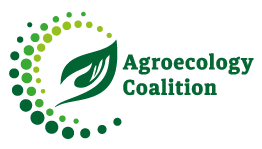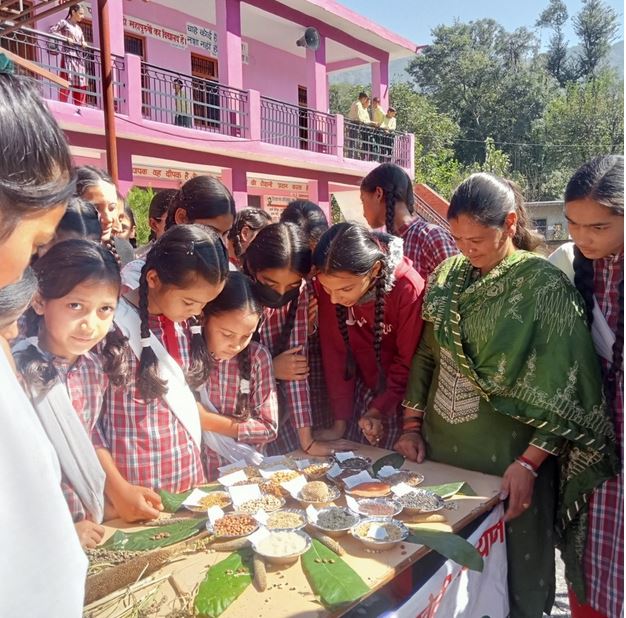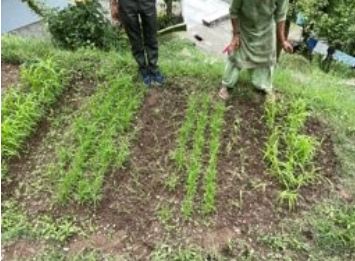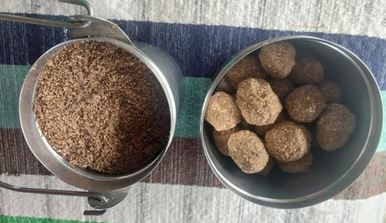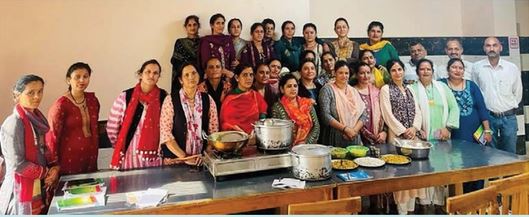Resilience through biodiverse cropping and millet recipes driven by Indian women network
India
This project is currently being implemented in the North of India since 2018 and focuses mainly on female smallholder farmers. The scope is to strengthen resilience through biodiverse cropping and seed system and broaden the type of crop produced in this region. The project is particularly in line with the agroecology principles and elements on input reduction and efficiency, economic diversification, co-creation and exchange of knowledge and human and social values.
Lead Organization
The project is led by HimRRA Network which is the Himachal Pradesh branch of the national Revitalizing Rainfed Agriculture Network, a gathering of civil society organizations, researchers, and practitioners with the vision to establish productive and resilient rainfed agriculture in India.
Partner organizations:
- Rural Technical Development Cooperation (RTDC): it is a voluntary action group established in 1988 and operates in the Kangra District of Himachal Pradesh, India. RTDC has been promoting equity-based, mountain-specific and people-centered development with a focus on sustainability and inclusiveness. RTDC works with marginalized groups on three themes: 1) natural resource management, 2) economic and sustainable livelihoods, and 3) local self-governance.
- Chinmaya Organization for Rural Development (CORD): it is a movement that now encompasses a wide range of spiritual, educational, and charitable activities, ennobling the lives of thousands in India and across its borders.
- Watershed Support Services and Activities Network (WASSAN): they work with communities, civil society, research and government institutions in rainfed areas to bring in prosperity and ecological security . They focus on smallholder farmers, farm workers, women and tribal communities.
Country
Himachal Pradesh state (districts of Kangra, Chamba, Mandi, Hamirpur, Bilaspur, and Kullu), India.
Timeline
March 2018 to present.
Funding
USD 53,000 funded by the Global Fund for Community Foundations (USD 40,000) and the Himachal Pradesh State Government (USD 13,000)
Context
The working region lies in low and medium hills [500 meters to 2200 meters above sea level] having humid subtropical climate. Inhabited largely by marginal people in the rainfed area, the terraced fields are small sized, each family owning around half-a-hectare of land.
Farmers sow a variety of crops including vegetables and cereals largely to meet domestic requirements. They sow cereals like paddy and wheat and have lately added some millet like finger millet and foxtail millet. Keen to grow vegetables, they also cultivate pulses and beans and generally have 10 or more crops even in a small area owned (e.g., quarter of a hectare).
Main beneficiaries
The main beneficiaries of the project are women farmers, and consumers to some extent.
Strategy
Objectives
- Build a network of organizations / farmers engaged in natural farming;
- Promote natural farming and strengthen agrarian livelihoods;
- Develop framework for public investments into rainfed agriculture;
- Encourage people’s innovations for location-specific solutions;
- Provide forums for capacity-building (and integration);
- Effect policy change by working as an interface between civil society and state government (starting with Panchayati Raj Institutions);
- Integrate farmers into collectives such as Farmer Producer Organizations (FPOs), Farmer Producer Companies (FPCs); and
- Promote ecological farming.
Activities
Featured principles and elements:
Co-creation of knowledge, recycling, input reduction, land and natural resource governance, synergy, diversity, social diets and traditions, and economic diversification
The project operates on small and marginal farms (less than 1 hectare).
- Organise exchanges and peer-to-peer knowledge through the network of organisations and farmers, fostering co-creation and knowledge-sharing
- Promote natural farming, including recycling and input reduction, enabling lower production costs and a better environment
- Encourage government contributions in rainfed regions where people are working to develop agricultural food systems that are more environmentally friendly, in line with local land and natural resources governance
- Promote ecological farming practices such as line sowing and multi-cropping with varieties of millet, carried out using dung and urine from indigenous cattle and promoting traditional seeds and landraces; encourage farmers to use their local seeds and exchange them amongst each other to result in more yields and better adaptation to the local climate
- Encourage a crop system that is context–specific and adapted to local conditions and knowledge, using synergy between different farming elements
- Help with social and human value systems to build capacity and promote social values and millet-based diets
- Raise awareness among farmers and villagers and advocate for district and state representatives to provide more funding in these areas, in alignment with local land and natural resource governance; meet with policymakers in Shimla (the state capital city) and showcase the participation of farmers/villagers, training, and activities implemented
- Organise field trainings, e-Learning and school visits to reinforce farmers’ production organisations and communities and boost circular economy
Monitoring and Evaluation Methods
Local Self-Help Group leaders and Champion Farmers monitor the activities of the project, starting by sowing different kinds of millet and other crops, as well as recording the crops planted, all varieties (including traditional), and the area covered by each farmer in the village.
The Project Coordinator also visits different villages, records the details of their progress, and presents them in weekly meetings held every Saturday to discuss any actions or alternative approaches.
Summarised results are discussed in the weekly RRA_N Meeting every Monday after presenting the weekly updates in Google Sheets. Sharing experiences, observations and any new challenges facing HimRRA and other state groups and theme group experts (Seeds Group, Millet Group, Livestock Group, Water Group) helps pave the way for corrective actions and developing know-how, which can be applied immediately or in the following year.
Outcomes and Lessons Learned
Lessons Learned
FAO’s 10 elements on agroecology helped participants understand that there are four key paths to ensure good implementation:
- Responsible governance
- Diversity
- Circular economy
- Co-creation and sharing of knowledge
Moreover, initiating the project by forming a network brought the community closer together in a short amount of time. This helped in co-creation and knowledge-sharing at physical meetings and through media such as WhatsApp.
Women farmers took to Natural Farming more vigorously, as they noticed positive changes in the behaviour of children who were offered naturally grown food. Noticing this, women farmers took more interest and created new recipes, including some based on traditional preparations. These recipe preparations were also sold at organised public events (e.g. at Dharamshala, Palampur, and Karsog in 2023). Participation and involvement of women farmers brought them recognition for developing innovative recipes, while sales at the events also provided financial gains. HimRRA Champion Farmers are now in demand by state government officials to provide training or raise awareness on different types of millet and the importance of local seeds.
Enabling Conditions
- Networking
- Community–level field work
- Opportunity for women farmers to act as managers
- Gender-balanced organisational team
- Promoting local experts, recognising and appreciating local innovations
- Engaging ‘Master Trainers’ in natural farming
- Narrative expressions of a comparative study on health parameters in conventionally farmed vs naturally farmed villages/wards
- Technical support from the Revitalising Rainfed Agriculture Network (e.g. Seed Group, Millet Group, Livestock Group, and other state chapters)
Limiting Factors
- Shortage of local (indigenous) breeds of cattle (by number)
- Losses of standing crops due to damages by stray animals (male cattle/monkeys)
- Insufficient rainwater conservation
- Lack of staff needed to have wider coverage and more intense involvement for a multifarious approach to promoting agroecology
- Lack of funds, especially for human resources
Relevant links
D.K. Sadana, Sukhdev Vishwapremi and Anoop Kumar, Nurturing family, biodiversity and agroecology, 2023, LEISA India
Contact
- D. K. Sadana, Indigenous Livestock Society-India (ILSI), and Chair of HimRRA: sadana.dk@gmail.com
- Chinmaya Organization for Rural Development (CORD)
- Watershed Support Services and Activities Network (WASSAN)
- Rural Technical Development Cooperation (RTDC)
Picture credits: D.K. Sadana
